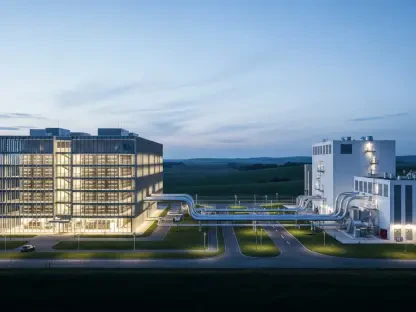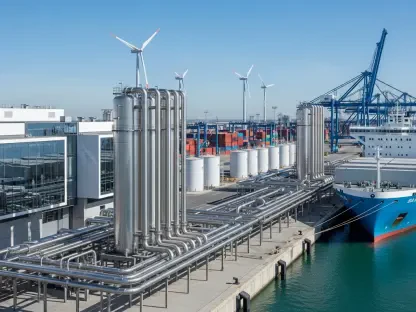The new guidelines set forth by the Department of Energy (DOE) have provided much-needed clarity on what constitutes a zero emissions building. This milestone is crucial for policymakers, organizations, and stakeholders who aim to foster sustainable, energy-efficient buildings. There has long been confusion between similar terms like zero emissions building and zero energy building, but the DOE’s definition aims to establish a standard that can be uniformly understood and implemented.
Understanding the New DOE Definition
Clarifying Common Confusion
Historically, the terms zero emissions building and zero energy building have caused significant misunderstandings. People often use them interchangeably, which creates discrepancies in implementation and measurement. The DOE’s recent announcement aims to dispel this confusion by providing a specific, standardized definition for zero emissions buildings. This initiative is designed to ensure that there is a common understanding across different sectors involved in building design, construction, and operations.The difference between a zero emissions building and a zero energy building might seem nuanced but is fundamentally important. Zero energy buildings focus on total energy use, aiming to achieve a balance between the energy produced on-site and the energy consumed. On the other hand, zero emissions buildings take a broader approach by emphasizing the elimination of operational emissions and reliance on clean energy. The DOE’s definition serves to delineate these concepts clearly, providing a foundation for consistent and effective implementation.
Specifics of the Definition
According to the DOE, a zero emissions building is characterized by achieving zero operational emissions from energy use. These buildings are energy efficient and devoid of on-site emissions originating from energy consumption. They rely solely on clean energy sources, either generated on-site or procured from renewable resources. This definition not only facilitates understanding but also sets a clear framework for evaluating and achieving zero emissions status.The DOE’s definition establishes a clear baseline for measuring and certifying zero emissions buildings. This standard encompasses several key aspects: energy efficiency, absence of on-site emissions, and reliance on clean energy. By emphasizing these points, the DOE aims to simplify the criteria that buildings must meet. With this definition, organizations can develop clearer sustainability strategies, helping architects and engineers design buildings that adhere to stringent environmental standards. It also aids regulatory bodies in setting enforceable policies.
Purpose and Impact of the New Guidelines
Guiding Policymakers and Organizations
The primary intent behind the DOE’s definition is to serve as a foundational guideline. This helps various governing bodies and organizations to develop and structure their sustainability policies, voluntary standards, and rating systems more cohesively. By doing so, the definition aligns diverse efforts towards a common goal of reducing emissions and promoting clean energy usage. These guidelines are expected to streamline operations and align objectives across multiple stakeholders.Governing bodies and sustainability organizations can now use this definition as a reference point for creating new policies or evaluating existing ones. The DOE’s standard aids in harmonizing different metrics and standards used within the industry, fostering a more uniform approach to sustainability. Moreover, organizations looking to invest in green technology and infrastructure can now be assured that their investments align with nationally recognized criteria. This alignment is anticipated to encourage more consistent and large-scale adoption of sustainable practices.
Promoting Decarbonization
This initiative is particularly significant in the context of global decarbonization efforts. Clarifying what constitutes a zero emissions building encourages investments in clean energy technologies, fostering a market environment that supports sustainable practices. The DOE’s guidelines are designed to accelerate the sector’s shift toward reduced carbon footprints. As buildings account for a substantial portion of global emissions, these guidelines can have a far-reaching impact.By providing a clear roadmap for achieving zero emissions status, the DOE is promoting innovation and adoption of advanced clean energy technologies. The building sector is now more incentivized to integrate energy-efficient systems and renewable energy sources. These guidelines are expected to drive technological innovations, leading to the development of smarter, more efficient building practices. In the long run, this initiative supports broad decarbonization goals, contributing significantly to efforts aimed at mitigating climate change.
Industry Support and Endorsement
Backing from Major Organizations
The DOE’s definition has received widespread support from industry leaders. Significant organizations such as ASHRAE and the U.S. Green Building Council (USGBC) have endorsed the guidelines, emphasizing their importance in bringing market consistency. This agreement highlights the role of a standardized definition in facilitating effective policy-making and promoting broad-scale sustainable development. The endorsement from these influential organizations adds credibility to the DOE’s definition, encouraging broader acceptance.Industry leaders recognize the value of having a clear and consistent definition for zero emissions buildings. The alignment with organizations like ASHRAE and USGBC helps ensure that the definition is comprehensive and practically applicable. These bodies play a crucial role in disseminating and implementing these standards within their respective fields. Their endorsement serves as a signal to the wider industry that these guidelines are both feasible and beneficial. This collaborative approach fosters a unified effort toward sustainable development.
Affirmations from Industry Leaders
U.S. Secretary of Energy Jennifer M. Granholm has praised the guidelines for adding clarity and structure to sustainability efforts in both public and private sectors. The endorsement from figures like ASHRAE President Ginger Scoggins and USGBC CEO Peter Templeton further underscores the collective commitment to creating resilient communities and high-quality jobs through sustainable building practices. These statements of support emphasize the real-world benefits of the new definition.Jennifer M. Granholm highlighted the potential of these guidelines to drive innovation and create jobs, affirming the broader economic and social advantages of sustainable building practices. Meanwhile, Ginger Scoggins expressed satisfaction with the recognition of ASHRAE standards within the DOE’s definition, framing it as a critical step towards a more sustainable built environment. Peter Templeton from USGBC reflected on the collaborative efforts between the public and private sectors, acknowledging that such partnerships are vital for advancing sustainability goals.
Future Implications for the Building Sector
Reshaping Building Standards
The introduction of the DOE’s clear definition is expected to have a profound effect on building standards. With this definition in place, there is a stronger incentive for architects, builders, and developers to adopt and integrate sustainable practices. The focus on energy efficiency and clean energy adoption might prompt innovations and improvements in building technologies and operational procedures. This shift is likely to mandate stricter compliance with environmental standards in future construction projects.Architects and builders can now design buildings with a clearer understanding of what constitutes zero emissions, guiding their choices in materials, systems, and designs. This clarity fosters innovation, encouraging the development of more efficient building technologies and practices. Developers might also find it easier to market zero emissions buildings, given the standardized definition and the growing demand for sustainable options. This standardization could unlock new markets and customer segments focused on sustainability.
Encouraging Nationwide Commitment
The move towards defining zero emissions buildings also signals a nationwide commitment to sustainability. By laying down clear benchmarks, the DOE is ensuring that stakeholders across the country are aligned in their efforts to reduce emissions. This shift is expected to catalyze broader adoption of clean energy solutions, enhancing overall environmental resilience. Nationwide adherence to these guidelines can significantly contribute to meeting national and global climate targets.A consistent definition facilitates coordinated efforts among various states and municipalities, leading to more widespread and effective implementation of sustainable practices. It also ensures that all stakeholders, from policymakers to consumers, have a clear understanding of what zero emissions entails. This unified approach is expected to create a more robust market for clean energy technologies and sustainable building practices. Ultimately, it reflects a collective endeavor toward achieving a resilient and sustainable built environment.
Collaborative Efforts and Recognition
Role of ASHRAE Standards
ASHRAE has been instrumental in setting standards that align with the DOE’s new definition. The recognition of these standards within the DOE’s guidelines showcases the symbiotic relationship between governmental directives and industry norms. This cooperation is essential in achieving the broader objective of decarbonizing the built environment. ASHRAE’s involvement ensures that the guidelines are both scientifically robust and practically implementable.The integration of ASHRAE standards into the DOE’s guidelines reinforces the credibility and practical applicability of the definition. ASHRAE’s expertise in building technologies and environmental standards ensures that the guidelines are rooted in rigorous scientific understanding. This collaboration between government and industry bodies facilitates smoother implementation and adherence to these new standards. It also highlights the importance of integrating industry expertise in the formulation of effective policies.
Contributions from USGBC
The Department of Energy (DOE) has recently issued new guidelines that offer much-needed clarity on what defines a zero emissions building. This development is crucial for policymakers, organizations, and stakeholders committed to promoting sustainable and energy-efficient buildings. For years, there has been considerable confusion between terms like zero emissions building and zero energy building. However, the DOE’s new standards aim to put an end to this ambiguity by providing a clear, uniform definition that can be easily understood and implemented by everyone involved.These guidelines help ensure that efforts to create environmentally friendly buildings are based on a consistent framework. By establishing a clear definition, the DOE is empowering architects, builders, and urban planners to develop structures that significantly reduce or eliminate their greenhouse gas emissions. This move is an essential step in combating climate change and fostering innovation in green building technologies. With a standard definition in place, the path forward for reducing the carbon footprint of buildings becomes clearer, facilitating greater strides in sustainability and energy efficiency.









